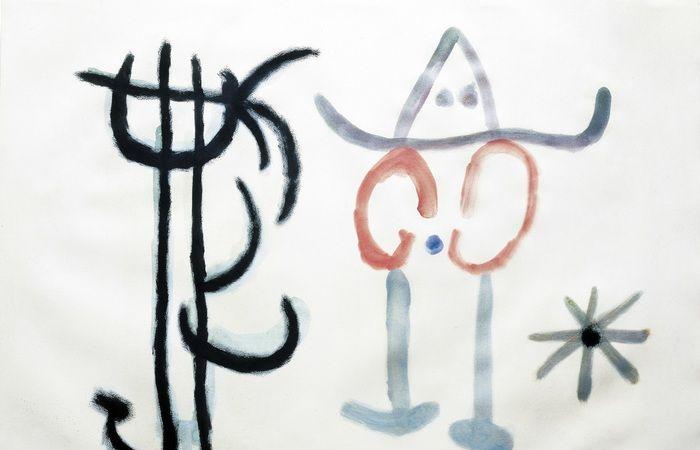The joy of living and the freedom to express oneself without being subjected to currents and movements, the gaze of an omnivorous spirit committed to continually experimenting by intertwining dreamlike sphere and abstraction, primordial imprint and modern sign. The great anthology dedicated to Joan Miró (1893-1983), arriving in Rome, in the Historical Infantry Museum, from 14 September to 23 February, outlines an artistic story that spanned the twentieth century with 150 works created between 1924 and 1981 by the painter little-known Catalan works, coming from private Italian and French collectors.
‘Miró – builder of dreams’, curated by Achille Bonito Oliva, Maïthé Vallès-Bled and Vincenzo Sanfo, is divided into eight sections to describe his passions and relationships with the cultural scene of his time: Lithographs; Posters; Poetry; Ceramics; Derrière le Miroir; Painting; Music; Miró and his friends, with about ten works by Man Ray, Picasso, Dalí, and photographs by Cohen and Bertrand, as well as books and documents by poets Breton, Éluard, Chair, Tzara. The last stop on a tour that touched Turin, Trieste and Catania, the story presented in Rome is enriched by a specific section dedicated to sculptures, a lesser-known page of his production. “Without comparing him to Picasso and Dalì, I think Miró is a great artist – said Achille Bonito Oliva speaking about him at the Spanish Embassy in Italy -. He opens a new universe and shifts the gaze from sight to vision. His painting is a continuous journey. Space with him is never still, but goes beyond perspective. He is an artist in movement, nomadic, like life. He opens space to the ghosts of the mind, this is his relationship with surrealism”.
Miró, the curators suggest, revolutionized the artistic language, bringing it “from an introspective space to a balance between abstract and figurative, such as to create a principle of impossibility, in which art overcomes every type of border”. His art takes a 360-degree tour of the entire history of creativity and welcomes into its baggage the animistic language of primitive art – observes Bonito Oliva in the catalog text – introducing into the expressive fabric “additional modalities capable of giving new energy to a apparatus and an alphabet now worn out”. For Vincenzo Sanfo “what is striking in Miró is the sparkle of his gaze, the calm and serene smile that accompanies all his images and which makes us understand that, behind that gaze, there is some secret room, a world of his own that one senses serene and joyful. And this is where the secret of Miró’s great success lies, that of knowing how to communicate, with his paintings, that joy of living that we have often lost”. Miró – he adds – with his colours, his strong and decisive sign, sometimes primitive, in his apparent simplicity, “attacks our gaze, catalyses it, making us sink into a infantile universe which, even if buried in the depths of our ego , it is always within us.”
The artist rarely made preparatory drawings or studies for his works, “having, within his mind, a capacity for concentration and rapid, immediate explication, capable of making a simple stain, a tiny sign, those masterpieces that we all know. He draws his inspiration not from the unconscious, but from his extraordinary ability to abstract from the world of reality”. Miró, therefore, is an independent and free artist and it is precisely in this path of freedom, underlines the co-curator Maithé Valles-Bled, that his political positions are expressed with works that are strongly evocative of the tragedies of his time. “Already in the summer of 1936, when the Spanish republicans rose up against the putschist generals, the paintings on Masonite foreshadow the dark years to come. Likewise, from the summer of 1939, in his canvases one perceives the imminence of the war in Europe. About thirty years later, he would not remain silent in the face of the upheavals of May 1968. His positions were expressed in the silence of words, but in the extraordinary power of form”.
Reproduction reserved © Copyright ANSA



